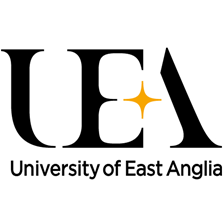
Unmasking the scientist: breaking down anonymity to build relationships when teaching online
Embarking on a degree presents a mix of emotions for new students. There is the excitement of a new adventure, perhaps trepidation for the unknown and for many, the challenge of living away from home for the first time.
When teaching and learning remotely online, there are added challenges for staff and students, not least of which is getting to know who you are teaching or who you are learning with.
For most students, the move away from home means a move away from their existing support network; just when they are facing the challenge of studying at a higher level, often in a new subject area, and might feel they need support most.
- What’s in a name? The whys and hows of pronouncing students’ names correctly
- Say my name: the importance of correct terms, titles and pronunciation
- Want to tear students from their phones? Learn their names
It is ironic that while making the huge leap to independent living the students simultaneously become part of a homogenous group, in the UK labelled as “freshers”. Students risk becoming anonymous and unknown. This has historically often been countered by style choices and body modification, but the online learning environment removes even this outward expression of individualism and personality.
Challenges of the anonymous virtual learning environment
There are many benefits for staff and students of learning student names, it humanises the teaching and learning environment and makes everyone feel “seen”.
In an online learning environment, while you may quickly build a rapport with the overall student cohort, making connections with individual students is more challenging.
You might see the name of a student appear as they enter the virtual classroom and they may engage with the chat function during a teaching session, but in terms of putting a face to a name, to learn about an individual student, the virtual classroom is not a helpful space.
During online teaching sessions, many staff prefer not to ask students to turn on their cameras, so as to acknowledge and respect their right to privacy and recognise the fact that many may be working in a space never intended to be a learning environment.
In many sessions students are encouraged to use their cameras and microphones if they wish, but it should not be required and typically few students choose to show their faces. So, while students become familiar with the faces of staff, the students themselves remain an anonymous cohort to their lecturers.
Strategies to overcome the anonymity of the virtual learning space
Name-calling: in the same way you would welcome a student into a physical classroom, it is important to greet each student by name as they enter the virtual learning space.
For students who have recently relocated to begin their studies or who may be self-isolating during the pandemic, this acknowledgement may be the only time in that day that they are noticed.
It may be the first time they have felt part of a wider community. This small act may make them feel less alone, less anonymous and encourage greater feelings of self-worth.
Seeing past the mask: in practical subjects such as biology, where hands-on laboratory work has been prioritised for face-to-face teaching throughout the pandemic, lab sessions may be the only time students engage with peers from their course in-person. To enable this practical teaching to continue, all staff and students have needed to wear disposable facemasks.
This poses another novel challenge. While the students feel they know their lecturers, the lecturers are unable to recognise their students. This means they cannot acknowledge those who participate well in online sessions or identify students needing additional support. The anonymity of online teaching can impair the rare opportunities for constructive in-person interactions.
The answer to this dilemma is simple. Ask all staff and students to write their names on their facemasks, providing coloured pens for the purpose. This simple act removes a seemingly unseen barrier to interaction; once names are declared, students can address each other and start forming bonds within class. When students ask for help or guidance, their lecturers know who they are speaking to, how they are performing on the course and can address them by name.
Once names are clearly displayed, lecturers can follow up conversations with students from previous email exchanges, seminar discussions or online comments. Barriers between students, who have been socially distanced then find themselves working in the same practical space, are removed as they are able to recognise each other from online interactions.
Allowing students to “label” themselves in this way enables us as educators to acknowledge and focus on individuals, removing the anonymity barrier of the virtual learning space. It helps to create a welcoming and friendly learning space in which students are free to express themselves and better able to learn.
Kelly Edmunds is an associate professor in biological sciences and Bethan Gulliver is a lecturer in medical education, both at the University of East Anglia.
If you found this interesting and want advice and insight from academics and university staff delivered directly to your inbox each week, sign up for the THE Campus newsletter.




